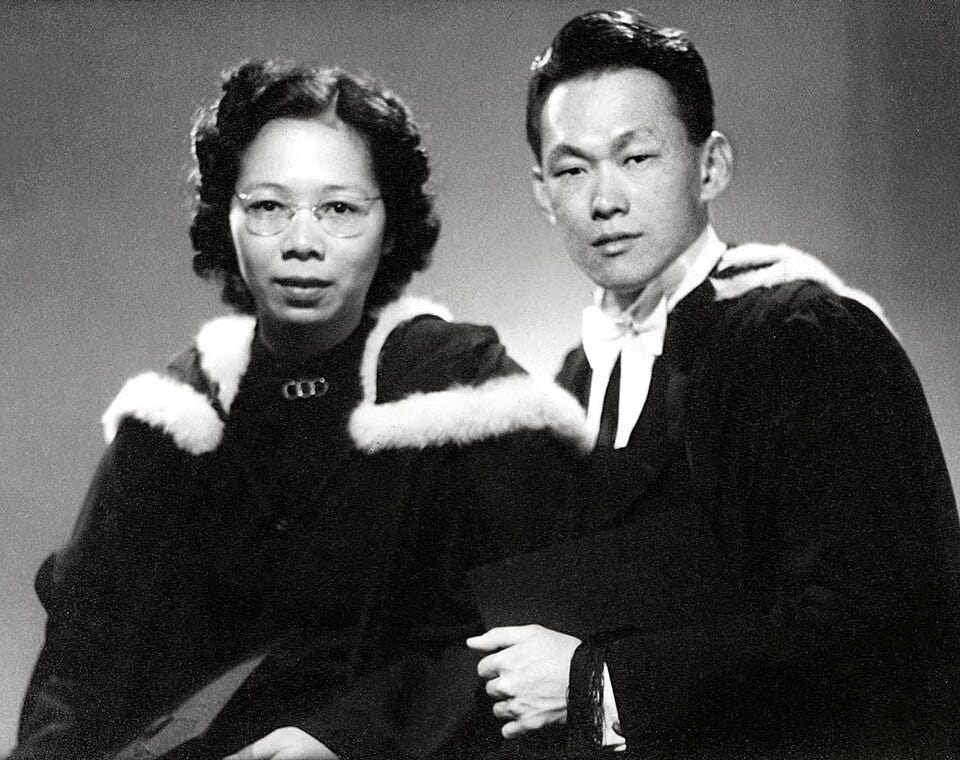Early Neocameralism and the East Asian Myth: Lee Kuan Yew’s Centrally Planned Egalitarian Market Economy
LKY, a Socialist? My return to Dark Geopolitical Theory...
“Look at all these companies—Americans, Japanese, Europeans—they bring technology; they train our people. We learn how to do things, and, because we are cheaper, after a while, we become general managers and company managing directors, and we learn how to do that and we become suppliers to them. So he said: ‘oh, you made use of capitalism to build a more egalitarian society.’”-Lee Kuan Yew
What can we learn from Lee Kuan Yew, the benevolent dictator, the “right wing”—or centrist?—Tito? Singapore is the fantasy of some right wingers, however, some might be dissuaded by the non-Aryan friendly climate and lack of racial homogeneity. For the aryans, year-round hot and humid climate is okay as long as there are swamps for the crocodile—if it’s Florida, alligators. Aryans, in their desperate attempt to find an honorary aryan or an ideal society, they end up choosing Japan as their model. For them, Japan is an homogenous, conservative, somewhat homophobic, pale skinned, but most importantly, a xenophobic society. Modern Japan is, without doubt, an economy with an expiration date; it hasn’t been able to keep up with the pace of the Three East Asian Tigers—I removed dusty PRC controlled Hong Kong from the list. Japan is an outdated country, it doesn’t manufacture anything, and it isn’t racially homogenous! If we were to be precise, modern Japan is made up of Yamato and Ryukyuans, as they aren’t genetically identical. But of course, for the Japanese Right-Wing politicians, the “homogenous Japan” narrative is a convenient lie to base their pro-unprotected sex policies that won’t solve their esoteric economic issues.
In 21st century populism, there is a desire to emulate the Authoritarian spirit of the East Asian idyllic realm, where there is beauty and order, women ready to be conquered, breedable, and monogamous. However, they want to tariff the other without having a plan, hoping the invisible hand will caress J.D. Vance’s absent phallus, who ironically is married to a racialized woman! The Authoritarian tigers have kept a button under their desk that decides whether to initiate or cancel production, acquire land and punish the corporate overlords. From Lee Kuan Yew to ROC’s humble KMT, all have partaken in some form of centralized planned economy; they didn’t play the game of trickle down economics of the neoliberal and rotten west. Nevertheless, a centralized planned economy doesn’t always mean Communism.
Both Taiwan and Singapore did the opposite of what a Trumpian United States would do. As a way to put an end to property speculation, they conducted a series of land reforms. Early KMT was influenced by Georgism, a doctrine that advocates for a land tax (single tax), with the purpose of eliminating other types of taxes. The most important of these measures was the sale of public lands at cheap prices and the Land-of-the-Tiller Act (1953). These polices enacted by the authoritarian government of Chiang Kai-shek—via class collaborationism™—helped the “peasants” increase production and revenue, of which was necessary for the funding of Taiwan’s industrialization. It’s worth noting that the KMT didn’t pay the landlords with money, instead, they were mostly compensated through commodity-backed bonds and shares in government-owned enterprises. Another aspect of this policy is that not only the landlords were “peacefully” stripped of their accumulated land, but they were also restricted in how much could they till and own.
On the other hand, Singapore’s Land reform context was different from ROC’s. And to some extent, the Land Acquisition Act of 1966 was more aggressive and proto-Socialist compared to KMT’s “peaceful” redistribution of private property. I’d argue that Lee Kuan Yew’s government was more authoritarian than the Koumintang’s, since it was based on overriding and distorting the laws of private property. Instead of compensating the landowners with shares or by paying them market value prices, LKY’s gov’t bent the law to their favor in order to pay “historical prices” or “pre-development values.” During this period, the Singaporean One-Party State managed to acquire most of the territory, which was necessary for the country’s urban and industrial development.




